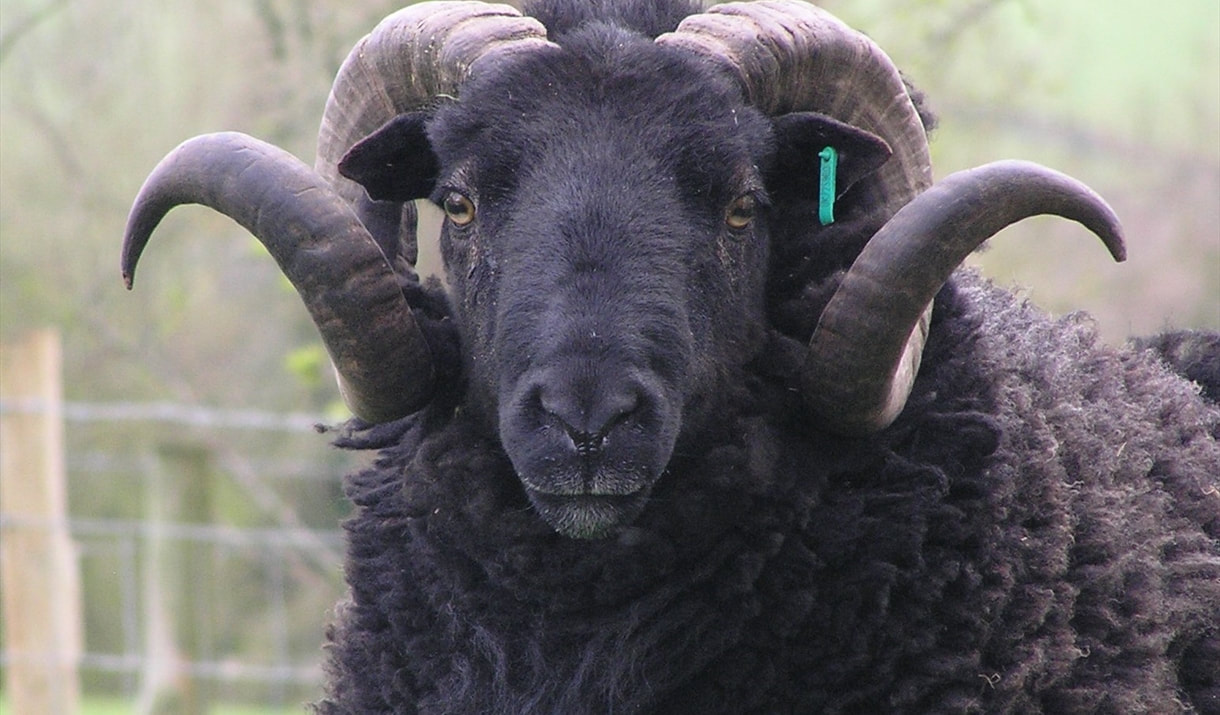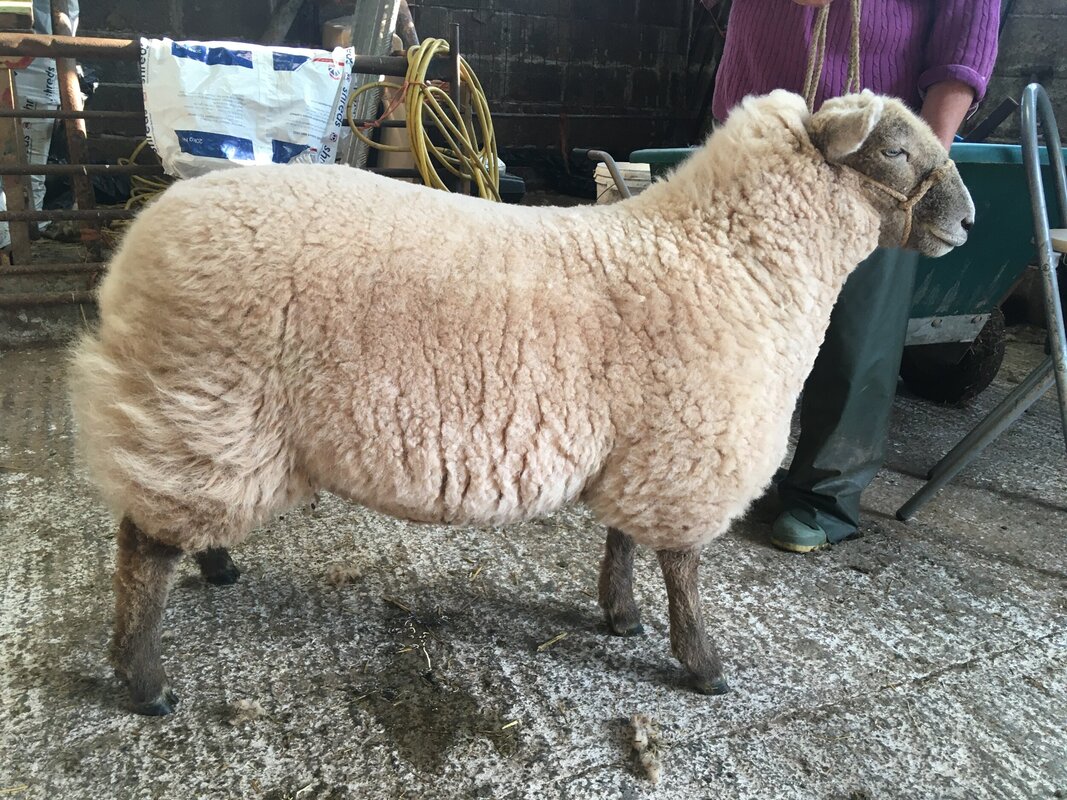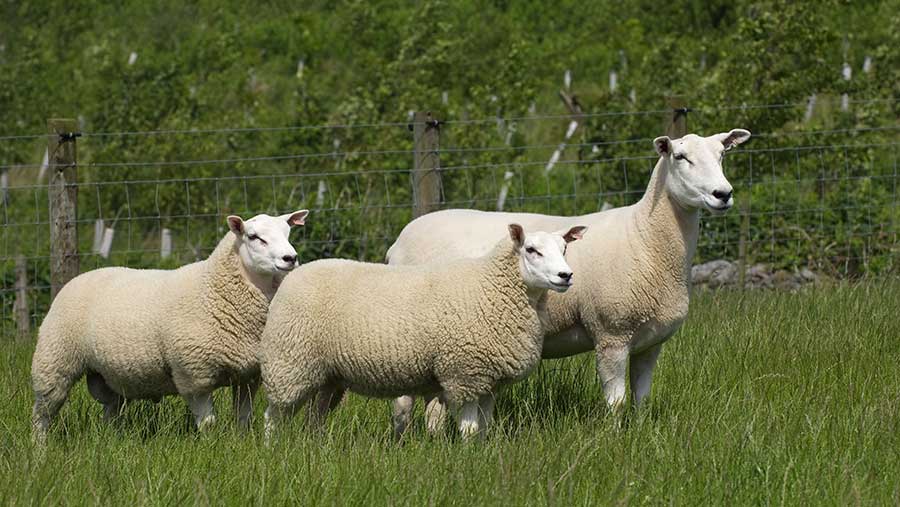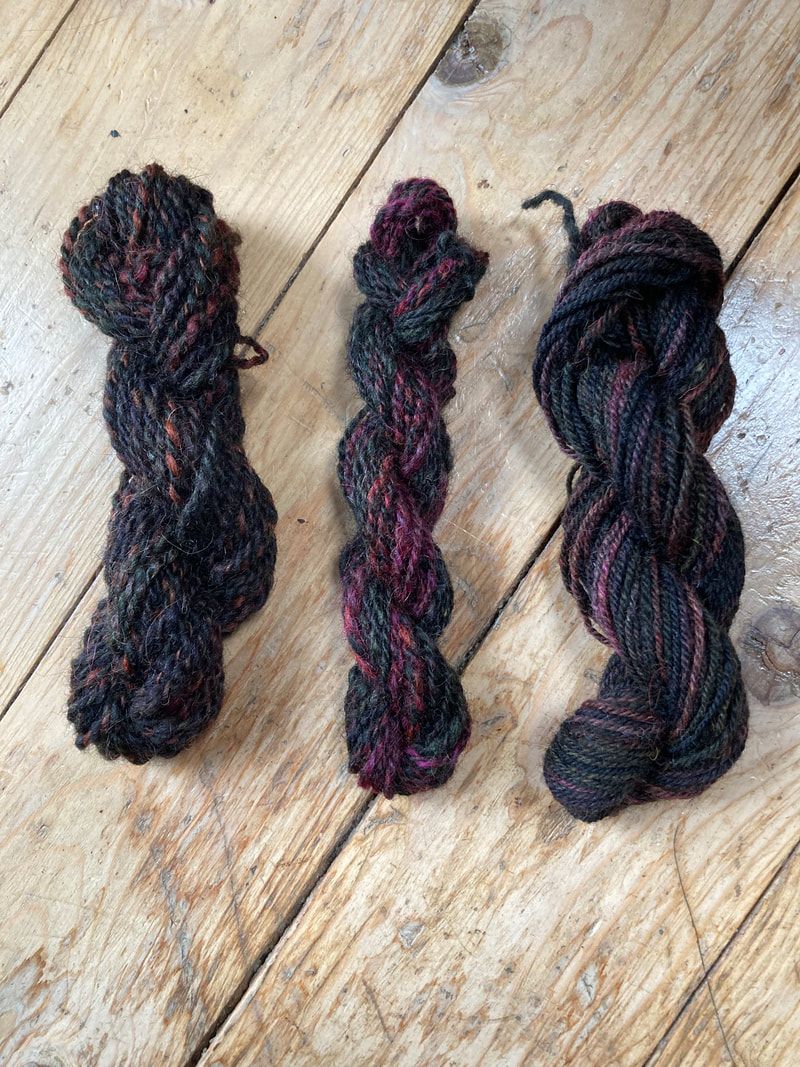|
A new blend that's heading your way at the start of the week... I felt that the range of fibres was missing something with a bit more tooth, the sort of thing you'd reach for to create things that are warm and durable rather than soft and cuddly. So I has a mess around with some welsh wools, creating something with a natural grey undertone to give the rich tonal effects that I love whilst dyeing. Black Welsh Mountain are most often kept as smaller scale flocks, often as more of a hobby, because the global wool market doesn't really value dark wool, so it's not priced very highly. They grow a fleece that's as close to true black as you get on a sheep, though the tips often end up sun bleached. It's nowhere near as coarse as white Welsh Mountain, and doesn't have any kemp. It's got a lovely open crimp and good staple length and is around 31 microns. Radnor sheep come from central Wales, along the border with England. It's another mountain the breed, though more accurately for the area it comes from it's more of a hill sheep! It's another crisp wool with a disorganised crimp that's great for trapping air. Again, the micron count of around 31. Then we have Lleyn, this is a longer staple length and a bit more open and wispy than then other two, with a more defined crimp. Possibly as a result of its probably parentage from crossing an extinct Irish long wool breed called the Roscommon with some native Welsh Mountain ewes. You only have to look at the position of the Lleyn peninsula, jutting out from north west Wales in to the the Irish sea to see how a connection with Ireland makes sense. To say Lleyn, btw imagine that you're saying the word "clean", but then don't quite make the hard "c" sound at the beginning, the "ll" letter sound is a bit different than that, but that's certainly closer than saying "Lin" which is the usual attempt people make! Then to all of those, just to add a bit of something special is the addition of some kid mohair. This has a long staple length to match these wool breeds, and just increases the shine. Some also say that you can use mohair as a strengthener in yarns, so you might want to experiment with this durable blend to create a non-nylon, non-superwash sock yarn. Here's some quick test skeins I spun. On the right is one that I chain plied, I was aiming for fingering weight but under estimated how much this yarn blooms when washed. On the right is a bulky 2-ply spun with a short forward draw which is nice, but in the middle is the one I spun from the fold with a supported long draw, and that's the real star of the show... so much loft and trapped air!
Anyway, as you can see it's a versatile blend, and one that I think you're going to like! There will be lots of colours heading to the shop on Monday. A note on the name, Cymreig is the word used to describe anything from Wales, Cymru. If it's to do with the language it's Cymraeg, but for objects it's more correct to use Cymreig.... So welsh wool is gwlan cymreig. 10/11/2023 02:07:06 am
A truly awesome blog article that dives deep into the world of sheep wool insulation. I've learned so much! Keep up the great work. Comments are closed.
|
Archives
January 2024
Categories
All
|
Hilltop CloudHilltop Cloud- Spin Different
Beautiful fibre you'll love to work with. Established 2011 VAT Reg- 209 4066 19 Dugoed Bach, Mallwyd, Machynlleth,
Powys, SY20 9HR |





 RSS Feed
RSS Feed


